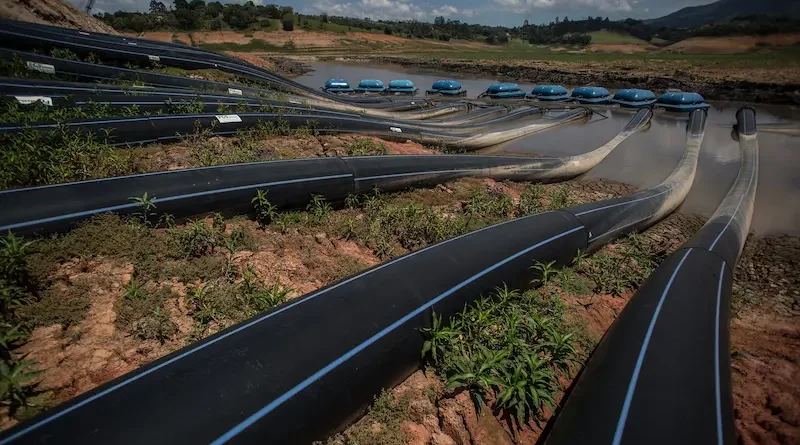How Weather Patterns Quietly Influence Dangerous Incidents On America’s Vast Web Of Freight-Carrying Cross-Country Routes
America’s highways carry millions of tons of freight daily, forming a lifeline for commerce. Yet, weather remains a silent but decisive factor influencing accidents on these routes. When storms, fog, or icy conditions strike, risks surge, leaving truck drivers vulnerable to sudden hazards. In such circumstances, the guidance of a commercial trucking accident attorney becomes essential for those affected.
The Impact of Sudden Storm Systems
One of the most significant dangers of long-haul trucking is its unpredictability. Weather forecasts may provide general warnings, but localized storm cells often strike with little notice. Heavy rain reduces tire traction, causing trucks—already difficult to stop due to their weight—to slide across slick surfaces. Sudden winds can also push trailers sideways, especially when they’re empty or lightly loaded.
These storm systems don’t just challenge drivers; they also disrupt traffic patterns. A simple slowdown can quickly cascade into multi-vehicle pileups when visibility drops. For freight carriers under strict deadlines, navigating these conditions safely requires a delicate balance between maintaining schedules and prioritizing safety.
Fog and Limited Visibility Challenges
Few weather conditions are as misleading as fog. At first, it may seem manageable, but visibility can drop from clear to just a few feet in an instant. For a truck driver moving at highway speeds, that sudden loss of sight leaves almost no time to react to obstacles ahead.
In these conditions, chain-reaction crashes are common, especially on roads without proper lighting or warning systems. Many drivers end up following the taillights in front of them, creating a dangerous pattern of “blind following.” When one vehicle collides, others often pile up behind it, quickly escalating the damage. This is why freight operators must prioritize careful route planning and stay alert to weather advisories before and during trips.
Snow, Ice, and Treacherous Winter Roads
Winter storms create some of the most hazardous conditions for truckers. Ice, often invisible, transforms highways into skating rinks. Trucks traveling downhill or around curves become especially prone to jackknifing or losing control altogether. Even seasoned drivers with chains or specialized tires cannot fully eliminate the risk of accidents.
Beyond the immediate threat of accidents, winter weather also slows delivery schedules, leading some trucking companies to pressure drivers into taking risks. This conflict between safety and profit underscores the need for strong federal and state oversight of freight operations during inclement weather.
Heat Waves and Tire Blowouts
While cold weather receives much attention, heat poses its own dangers. Extreme summer temperatures increase the likelihood of tire blowouts on trucks carrying heavy loads. When a tire bursts at high speed, debris can scatter across lanes, forcing nearby drivers into evasive maneuvers. For the car itself, a sudden blowout may cause swerving or even rollovers.
Heat can also lead to engine overheating, which stresses equipment and creates roadside breakdowns. These breakdowns, particularly when they occur on narrow highways, pose additional risks by forcing trucks and other vehicles into unsafe positions along busy routes.
Regional Patterns Across the Country
Weather impacts vary across America’s regions, shaping the challenges drivers face. The Midwest often sees blizzards and ice storms, while the Southeast battles hurricanes and torrential rains. Out West, desert heat and high winds create a unique set of threats.
Truckers who drive cross-country must adapt quickly to these shifting conditions, often within the same journey. Training and preparedness remain crucial. Yet despite preparation, the scale and unpredictability of weather ensure that risks never entirely disappear. When serious accidents involving commercial trucks occur, the involvement of a skilled trucking accident attorney can provide essential support for injured victims navigating complex legal landscapes.
Technology’s Role in Safer Freight Movement
Advances in technology are helping mitigate the dangers associated with weather-related events. Real-time GPS navigation systems now integrate weather updates, warning drivers about hazardous conditions ahead. Collision avoidance systems, lane departure alerts, and automatic braking also provide a safety net when visibility or traction is compromised.
However, technology is not foolproof. Systems may lag, fail, or misinterpret conditions, and not every truck is equipped with the latest tools. Human judgment and cautious decision-making remain irreplaceable components of safe driving.
Protecting Drivers and Communities
Weather-related truck accidents are not just about the drivers; they affect entire communities. A crash can close major interstates for hours, delaying emergency services, disrupting supply chains, and putting other motorists at risk. Preventing such incidents requires collaboration among government agencies, trucking companies, and individual drivers.
Training, strict adherence to safety regulations, and accountability are critical. When negligence combines with hazardous weather conditions, the consequences can be devastating. Victims deserve legal remedies, and the counsel of a skilled commercial trucking accident attorney ensures that their rights are upheld.
Conclusion
Weather may be silent, but its influence on freight routes is undeniable. From fog to heatwaves, it shapes the risks that truckers and motorists face daily. While technology and training reduce danger, accidents still occur, making accountability and legal support vital for those impacted.
Visit the rest of the site for more interesting and useful articles.

